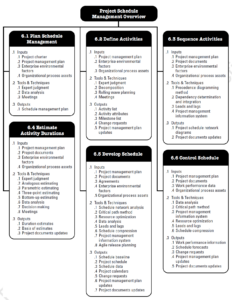A requirements management plan (RMP) is a document that defines the processes and procedures for managing requirements throughout the software development lifecycle. It ensures that all requirements are identified, documented, tracked, and verified to meet the needs of the business and end-users.
An effective RMP is essential for successful projects. It helps to avoid scope creep, reduce rework, and improve communication between stakeholders. Using a requirements management plan template can simplify the process of creating a comprehensive and tailored RMP for your project.
Components of a Requirements Management Plan
A well-structured requirements management plan includes the following key components:
- Introduction: Provides an overview of the project, its goals, and the purpose of the RMP.
- Scope: Defines the boundaries of the RMP, including which requirements are in scope and which are not.
- Roles and Responsibilities: Clearly outlines the roles and responsibilities of stakeholders involved in requirements management.
- Processes: Describes the processes for identifying, documenting, tracking, and verifying requirements.
- Tools and Techniques: Identifies the tools and techniques to be used for requirements management, such as requirements management software, traceability matrices, and user stories.
- Quality Assurance: Defines the quality assurance measures to be implemented to ensure that requirements are accurate, complete, and consistent.
- Communication: Outlines the communication channels and methods used to ensure effective communication among stakeholders.
- Change Management: Describes the process for managing changes to requirements, including approval, implementation, and tracking.
- Appendix: Contains additional supporting documentation, such as templates, checklists, and diagrams.
Benefits of Using a Requirements Management Plan Template
Using a requirements management plan template offers several benefits, including:
- Reduced Time and Effort: Pre-built templates provide a structured framework, eliminating the need to start from scratch.
- Improved Quality: Standardized templates ensure that key components are addressed and requirements are managed consistently and thoroughly.
- Increased Consistency: Templates promote consistency in requirements management across projects and teams, reducing errors and rework.
- Better Stakeholder Engagement: Clear and concise templates facilitate stakeholder communication and understanding of requirements.
- Increased Efficiency: Streamlined processes and predefined tasks improve efficiency and reduce the risk of missing or overlooking requirements.
In conclusion, a well-defined requirements management plan is crucial for successful software development projects. Using a requirements management plan template simplifies the process of creating a comprehensive plan that meets the specific needs of your project. By following the guidance provided in the template, you can enhance the accuracy, completeness, and traceability of your requirements, resulting in improved project outcomes.
Remember to customize the template based on your project’s unique characteristics and ensure that the RMP remains a living document that is regularly updated and maintained as the project progresses.

